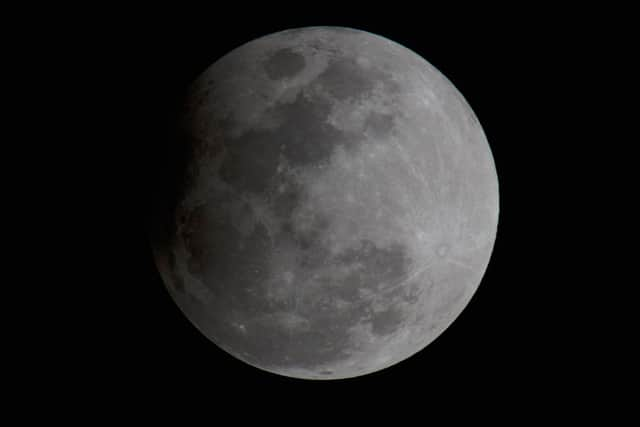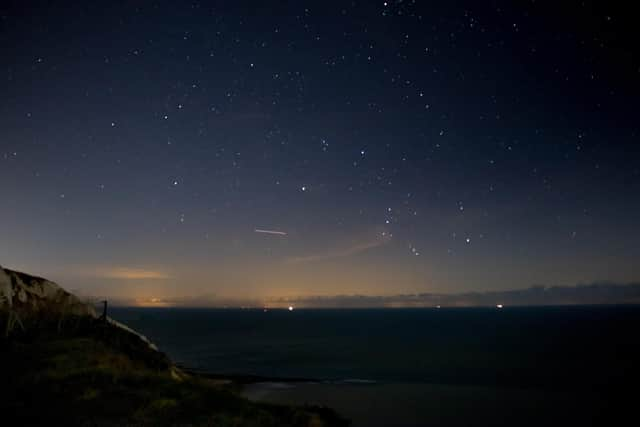February Full Moon 2023: when is it, why is it called ‘Snow Moon’ and best time to see it in Edinburgh
and live on Freeview channel 276
February is here, bringing with it an exciting month of stargazing opportunities for fans across Edinburgh. This month the Snow Moon will light up the skies as the second full moon of 2023 gets underway.
The last full moon, known as the Wolf Moon, peaked on January 6 and gave moon-gazing enthusiasts a great show in night skies UK wide.
Advertisement
Hide AdAdvertisement
Hide AdGazing up at the sky for a little bit of solace or escapism from our busy lives has continued to rise in popularity as Astro tourism sees travellers venturing to breath-taking off-the-grid destinations to experience the unparalleled beauty of our galaxy. Whether you’re an amateur astronomer or a cosmic expert, stargazing has been a popular hobby for millions since ancient times.
But when will the Snow Moon take place in 2023 and what is the best time to see it in Edinburgh? Here’s everything you need to know.
When will the next full moon take place in 2023?
The Snow Moon is set to take place on the evening of Sunday, February 5. According to EarthSky, the full moon will appear near Regulus, which is the brightest star in the constellation Leo.
The Old Farmer’s Almanac said there will be 13 full moons throughout the year. These are listed below.
Advertisement
Hide AdAdvertisement
Hide Ad- January 6: Wolf moon
- February 5: Snow moon
- March 7: Worm moon
- April 6: Pink moon
- May 5: Flower moon
- June 3: Strawberry moon
- July 3: Buck moon
- August 1: Sturgeon moon
- August 30: Blue moon
- September 29: Harvest moon
- October 28: Hunter’s moon
- November 27: Beaver moon
- December 26: Cold moon
How often does a full Moon occur?
The Royal Museums Greenwich confirms that a full Moon happens roughly every 29.5 days. This is the length of time it takes for the Moon to go through one whole lunar phase cycle.


Why is it called ‘Snow Moon’?
The Snow Moon is so called as Native Americans reportedly nicknamed full moons to reflect events that occur in nature. Snowfall is associated with the month of February, leading the full moon to be called the Snow Moon.
What is the best time to see the ‘Snow Moon’ in Edinburgh?
The best time to catch the Snow Moon in the UK is after sunset. So stargazers across Edinburgh will have the best chance of spotting the Snow Moon after 4:54pm GMT.
The visibility of the full moon will be weather dependent but if you wish to see the Snow Moon in all its glory, there will be a virtual streaming of the Snow Moon rising over Rome broadcast by The Virtual Telescope Project.
Advertisement
Hide AdAdvertisement
Hide AdTop Stargazing Tips
Stargazing is easy, you just go outside and look up at the night sky, however, there is much more to it than seeing the moon shine and stars sparkle above us.


The best tip is finding a dark-sky site, and making sure to check the weather forecast before going. Light pollution can often affect how much of the night sky occurrences we see, even more so the weather conditions can be cloudy which again would make it hard to see the stars.
Find a clear spot where you can see as close to the horizon as possible is a good starting point for finding a spot that will give you the best opportunity to see the sky if you are unable to get to a dark-sky site.
Stargazing is a really popular hobby for amateurs and professionals so it’s likely that there is a club near you, or that your friends have a similar interest. Finding a buddy or club to join on the cold dark nights is always helpful, and one of the best ways to stay safe when stargazing.
Advertisement
Hide AdAdvertisement
Hide AdEarthSky advises beginners not to invest in a telescope straight away, they are a big investment so start with binoculars if you are wanting to get a closer look. It’s worth noting that it’s possible to see many of the night sky events with just your eyes in the right conditions.
Comment Guidelines
National World encourages reader discussion on our stories. User feedback, insights and back-and-forth exchanges add a rich layer of context to reporting. Please review our Community Guidelines before commenting.
